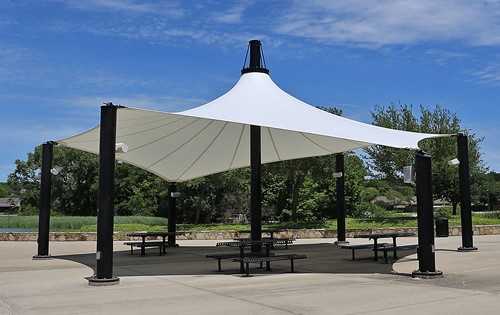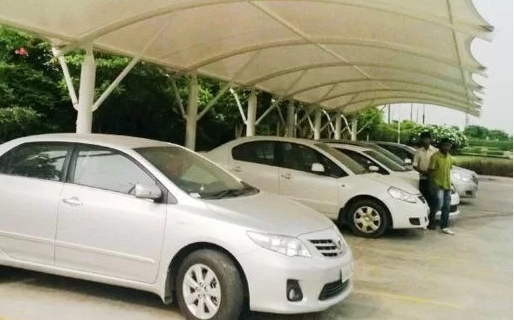Tensile Fabric Structure at Best Price in India
May 01, 2024 By admin

Tensile Fabric Structure at Best Price in India
Tensile fabric structures are an intriguing combination of architectural beauty, engineering innovation, and environmentally beneficial design. Find the Tensile Fabric Structure at the Best Price in India, In recent years, these lightweight, versatile, and visually beautiful architectural marvels have grown in favor. Flexible materials, such as fabric membranes, are used to construct a variety of useful and visually appealing places, ranging from stadiums and museums to sidewalks and pavilions. In this post, we’ll delve into the realm of Tensile fabric structures, learning about their history, design principles uses, and the multiple advantages they provide.
Tension: Tensile fabric structures rely on the tension notion. Stretching and securing the fabric membrane to a frame gives it a three-dimensional shape. This tension aids in the even distribution of loads, making the structures strong.
Membrane Material: Choosing a fabric membrane is critical. Tensile constructions of today are made of materials such as PVC-coated polyester, PTFE-coated fiberglass, or ETFE foil. These materials are durable, weather-resistant, and provide a wide range of aesthetic options.
The support structure can be composed of a variety of materials, including steel, aluminum, or wood. The support structure’s design is critical in establishing the overall appearance and functionality of the tensile structure.
Applications :
Tensile fabric constructions are employed in many different industries, including stadiums and arenas. Stadiums & Arenas: Iconic stadiums such as Munich’s Allianz Arena and Beijing’s National Stadium (Bird’s Nest) have adopted tensile constructions for their roofs, sheltering thousands of spectators.
Tensile structures are utilized in commercial venues like as retail malls, convention centers, and airports to create visually beautiful and functional environments that enable natural light to stream through.
Tensile canopies and pavilions are often used for outdoor events, providing shade and protection from the weather.
Tensile structures can be used as architectural components such as entryways, pathways, and atriums to improve the aesthetics of buildings.
Sustainable Design: Tensile fabric structures often incorporate sustainable design principles. They allow for energy-efficient natural lighting, and some materials used are recyclable, making them an eco-friendly choice.
Advantages :
Aesthetic Appeal: Tensile fabric structures offer a unique and visually striking architectural aesthetic. Their fluid, organic shapes can enhance the beauty of any space.
Lightweight: Tensile structures are remarkably lightweight compared to traditional building materials. This reduces the overall weight of the structure and the need for heavy foundations.
Durability: Modern fabric membranes are designed to withstand harsh weather conditions, including wind, rain, and snow. They are also resistant to UV radiation and can last for decades with proper maintenance.
Versatility: Tensile fabric structures can be designed in a wide range of shapes and sizes, offering architects and designers a high degree of creative freedom.
Cost-Effective: Tensile structures can often be more cost-effective than traditional building methods, both in terms of initial construction costs and ongoing maintenance.
Conclusion :
Tensile fabric structures are an architectural wonder that seamlessly combines aesthetics and function. They have become symbols of innovation and sustainability, revolutionizing the way we think about architectural design and construction. With their versatility, aesthetic appeal, and numerous advantages, tensile fabric structures are set to continue shaping city skylines and providing creative solutions to architectural challenges in the future.



